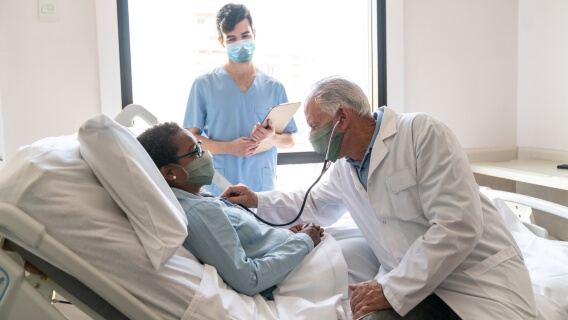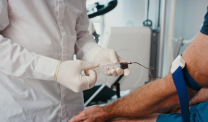Study Shows Access to Care Often Difficult for Mesothelioma Patients
Research & Clinical TrialsWritten by Tim Povtak | Edited By Walter Pacheco

When it comes to malignant pleural mesothelioma, not everyone is treated equally. A disparity in access to care makes the difference in mesothelioma treatment quite dramatic, according to the University of Miami’s Sylvester Comprehensive Cancer Center.
“Patients without access to expert multidisciplinary care at high-volume, academic facilities are being inappropriately undertreated for their disease,” medical oncologist Dr. Estelamari Rodriguez told The Mesothelioma Center at Asbestos.com. “The access is not adequate as it should be for everyone.”
Rodriguez led a recent study at University of Miami that looked at socioeconomic disparities in access to treatment and survival in patients around the country with potentially operable disease.
She presented her work at the 2021 World Conference on Lung Cancer earlier this month.
“If you look across the country, there’s just not a lot of the very best care, the real expertise that you need for mesothelioma,” she said. “We’re still struggling to provide that access in the U.S.”
Rural Areas Have Few Mesothelioma Surgeries
University of Miami’s retrospective study involved 2,804 patients with stage I-III disease from the National Cancer Database, between 2004 and 2017, which was mostly prior to the rise in treatment with immunotherapy.
The goal of the study was assessing how access to care plays a role in prognosis and the optimization of outcomes.
What Rodriguez found was:
- 50% of patients in the study underwent surgery. The majority of those were men (70%) and white (83.1%).
- Only 1.6% of the patients who had surgery were from rural areas.
- Most of the surgical patients had either private health insurance (47.7%) or Medicare (44.6%). Only 2.3% had no insurance and 3.4% were on Medicaid.
- Most predictive of poor overall survival was advanced age, male gender and lack of multimodality care.
- A majority of surgeries were performed at high-volume academic centers in urban areas.
The most effective treatment, and longest survival, was among patients who received surgery and adjuvant chemotherapy, or surgery and adjuvant chemotherapy with radiation treatment.

Access top mesothelioma cancer centers that have experience treating this rare disease.
Get Help NowSylvester Cancer Center Leads the Field
An earlier Brigham and Women’s study published by the Journal of Gastrointestinal Surgery showed that median survival is more than twice as long for mesothelioma patients treated at an academic facility – such as the University of Miami’s Sylvester Comprehensive Cancer Center – compared to those treated at a community hospital.
That same study also found less than 50% of mesothelioma patients are treated at academic facilities. Both studies have shown there is no substitute for experience, particularly with this rare cancer, which is diagnosed in 3,000 people annually in the U.S.
The Sylvester Cancer Center has built one of the country’s leading mesothelioma treatment programs in recent years, sparked by the arrival of thoracic surgeon Dr. Nestor Villamizar in 2014.
Villamizar came from Brigham and Women’s Hospital in Boston, where he trained under celebrated surgeon and mesothelioma pioneer Dr. David Sugarbaker, who died in 2018.
Sylvester Cancer Center will hold its first virtual Miami International Mesothelioma Symposium Nov. 6, attracting specialists from around the world.
“Raising awareness to early symptoms, the recognition of symptoms, is still a big problem in the field,” Rodriguez said. “Reaching the right treatment team, knocking on doors until you find it, can make all the difference.”
Telemedicine May Help Some Patients
Researchers did not find a linear relationship between survival and income. Patients in a middle-income bracket actually exhibited a better survival rate, and a 17% lower risk for mortality, than those in the highest income bracket. Those in the lowest income bracket had comparable survival to those in the highest.
Rodriguez believes the recent rise in telemedicine, sparked by the COVID-19 pandemic, could help provide access to those who have lacked it in the past, particularly patients in rural areas.
“What we’ve learned [from the study] is that patients still are not getting the care they need,” she said. “It’s hard to have experts in mesothelioma in every corner of the country, so telemedicine could help. But there still is much more work to be done.”






